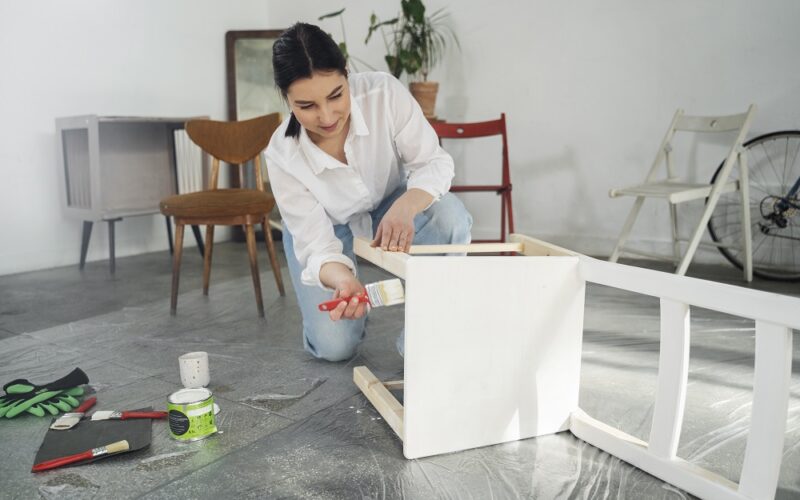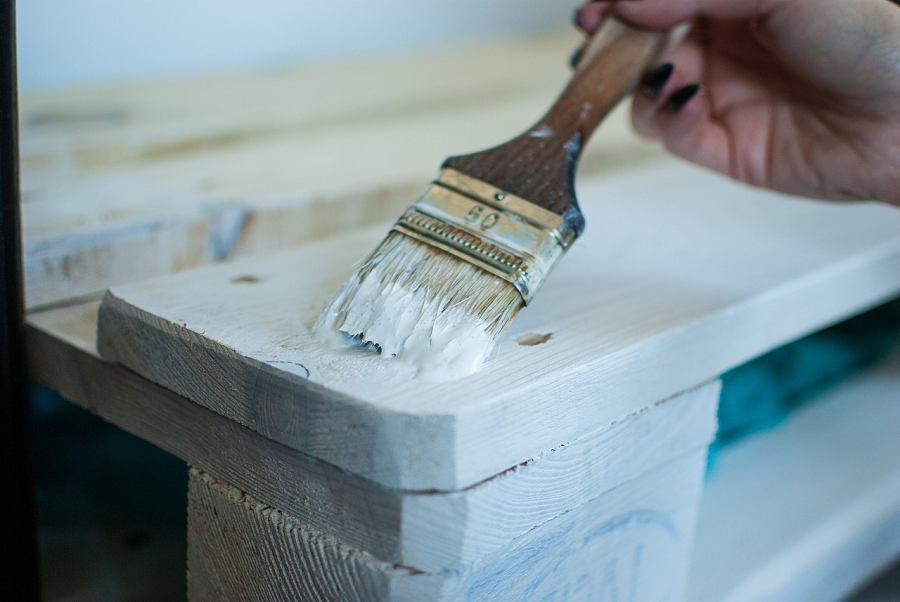
Is an outdated piece of furniture ruining your house’s interior? Does the thought of giving away your favourite vintage furniture trouble you? Is your old office furniture hard to replace? Has the moisture in the air taken away the charm of your furniture? How about giving them a new look and life?
Newly painted furniture can add a pop of colour to any space. It can change the overall look and feel of a room, making it appealing. But is furniture painting that easy? What are the things one must consider when it comes to furniture painting?
The article reflects on the importance of furniture painting and gives some painting furniture tips. Let’s learn more about how to paint furniture.
Importance Of Painting Furniture
So, why should you paint your old, outdated furniture? Is it actually worth it? Here are some benefits of giving a fresh coat to your furniture:
1. Controls Moisture
If your furniture is in continuous contact with moisture, it can damage the furniture to its chore. Painting your furniture with good quality paint can act as a barrier between moisture in the air and the wood. This helps preserve the furniture and ensure its longer life.
2. Enhance Aesthetics
Just like painting a wall, furniture painting can make them aesthetically pleasing. Simply painting your furniture can enhance the look of any corner of your room.
3. Increases Furniture Life
Applying high-quality paint prevents peeling or cracking of the furniture surface. It also prevents your furniture from scratches or daily wear and tear. A professionally done painting job will ensure a long-lasting furniture look without the frequent need for repainting.
4. Increase Resale Value
If you want to sell your old furniture, painting it with a fresh coat can increase its resale value. Also, you will have more prospects willing to purchase your refurbished furniture.
5. Easy Maintenance
Dirt and dust can accumulate easily on the rough, chipped furniture surface, which is hard to clean. However, maintaining painted furniture is quite an easy job. All you need to do is wipe off the dust with a clean, damp cloth, and it’s done.
Types Of Furniture Paint
With so many options around, choosing the paint type that best suits your needs is difficult. However, knowing each paint type you have can help you make a wiser decision. Below are the four different types of furniture paint you can choose from:
Oil-Based Paint
This paint type is quite popular among people because of its durability and luxurious finish. Components that add oily traits to the paint give the surface a shiny and glossy finish. Do you know the best part? This paint doesn’t need a topcoat. Instead, apply it directly on the wooden surface or after the primer.
|
Pros |
Cons |
|
Self-levelling |
High levels of VOCs |
|
Durable finish |
Not easily available everywhere |
|
Fit for use on most surfaces |
Takes longer to dry between coats |
Water-Based Paint
Most furniture paints (wood paints) available are water-based. Easy to apply, water-based paints give a classy look to bare wood. You don’t need to prepare the wooden surface before applying this type of paint. This is popular among people due to its shorter drier time and long-lasting finish. It also does not fade or crack.
|
Pros |
Cons |
|
Adheres well to most surfaces |
Finish is prone to scratching or marking |
|
Smooth finish |
Brush strokes might be visible |
| Fast drying time |
Can be expensive, limited colour options |
Latex Paint
You should go for Latex wood paint if you plan to give the plywood a matte or satin finish. This paint will give a beautiful look, which will highlight your artistic wooden surfaces. The best part? Furniture painted with Latex wood paint can be easily cleaned using soapy water.
|
Pros |
Cons |
|
Available in various colour options |
Doesn’t withstand heavy use |
|
Available in various finishes |
Long curing time |
| Easy to clean with soap and water |
Not all finishes can be washed |
Acrylic Paint
It is an odourless paint that works great for small wood paint projects. It dries quickly, making the wood appear artistic. If you love creativity, this is the paint for you. Use any colour of your choice and create special effects.
|
Pros |
Cons |
|
Easy to apply, affordable |
Needs a primer for the best results |
|
Durable finish that resists stains |
Long curing time |
| Rich Colour |
Often sold in small containers |
If you are still confused, discuss with your interior painters about the ideal paint type for your furniture.
Painting Furniture Tips
Painting furniture is fun. Working with colours and seeing your furniture in a newer look feels like an out-of-the-world experience. However, the process of painting furniture isn’t as easy as it sounds. A number of crucial things are worth considering to ensure the painting job is done rightly.
If you are planning to paint your furniture in the near future, here are some tips and tricks by professional painters to keep note of:
1. Choose The Right Application Method
When you paint your furniture, it’s important to choose the right paint method. For instance, you can use natural bristle brushes for oil-based paint or synthetic bristle brushes for water-based paint.
There are also other tools like paint rollers, clothes, or sponges for special effects. You can use a paint sprayer for big projects or if you don’t want brush strokes.
2. Choose The Right Applicator
The way your paint job looks will depend on the tool you use. If you use a brush, you’ll get good coverage. However, the strokes might be noticeable, especially if you use water-based paint. A roller will give you a smooth and even finish, but it’s harder to control.
Using a cloth or sponge will give you a textured finish which is great if you want a unique look. So, choose as per your need.
3. Apply A No-Fail Primer
Priming your wood is one of the most important aspects of furniture painting. It will give the paint an even surface to stick to. If you don’t want to take a chance with your paint job and prevent bubbling or flaking, make sure to apply a no-fail primer before the paint.
4. Seek Professional Assistance
Whether or not you are opting for a DIY, professional assistance is something you should never overlook. Find a reliable painting company in your surrounding area whom you can trust and rely on for your painting furniture job. Ask questions if you’ve any. They have the understanding and experience to help you choose the right paint type, colour, and material for your painting job.
5. Prepare Well
Before you begin with your furniture painting job, you need to prepare well in advance. For beginners, give your furniture a good cleaning. Disassembling your furniture is a good idea to ensure the paint has reached every crack and corner of the furniture. Use mild soap to clean the furniture. Sand your furniture well to remove the glossy finish. Use fine-grit sandpaper. This will allow you to have a better surface for the paint to hold onto.
Further, if you see any holes or cracks in the furniture, fill them with compound to make the surface even. Remember to cover other furniture with drapes as sanding will surely lead to dust everywhere.
These preparatory steps will ensure your furniture paint job doesn’t peel or chip.
6. Keep Up With The Trends
Before starting your furniture painting project, check out the new market trends. Your goal is to make something that suits your personal taste. Also, do not forget your house’s interior. This will help you choose a paint colour for your furniture that compliments well with the rest of your space.
The Final Say
Furniture painting is like walking on eggshells. You need to be careful in the tiniest of the steps you perform. From choosing the right paint type to colour and preparing for the job, you have to be wary of a lot of things. But done rightly, your refurbished furniture will just enhance the ambience of your property from the inside.






